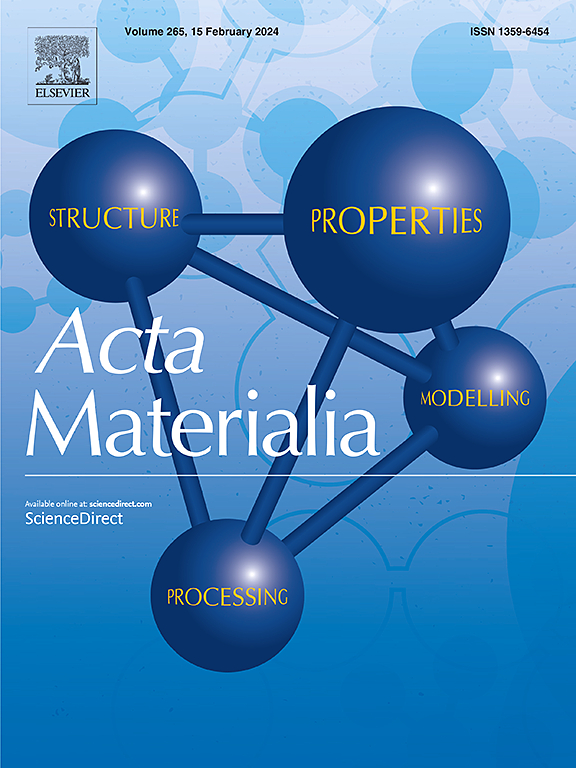Manipulating Piezoelectric and Electro-strain Properties of BiFeO3-BaTiO3-Based Ceramics through Chemical Doping-Controlled Domain-size Engineering
IF 9.3
1区 材料科学
Q1 MATERIALS SCIENCE, MULTIDISCIPLINARY
引用次数: 0
Abstract
Ferroelectric domains are crucial for the performance of piezoelectric ceramics, as the size and switching dynamics affect polarization response directly, manipulating both ferroelectric and piezoelectric properties. In this study, we achieved BiFeO3-BaTiO3 ceramics with domain sizes from macroscopic to nanoscale by incorporating a small amount of antiferroelectric phase. Contrary to the long-standing belief that smaller ferroelectric domains own lower polarization switching barriers and yield higher piezoelectricity, we found that in chemical doping-controlled domain size engineering, the smaller the domain size, the more difficult it is for polarization switching. Ceramics with the largest domain exhibited superior positive piezoelectric performance due to the sufficient polarization switching and reduced domain wall pinning, achieving a piezoelectric coefficient (d33) of 460 pC/N at 350°C. Middle-sized domains achieved optimal electro-strain performance determined by the trade-off between the domain walls pinning and the increased local tetragonal or orthorhombic symmetries, with a strain (0.29%) and an excellent piezoelectric strain coefficient (d33*) of 726.4 pm/V at 160°C. This work provides novel insights into how domain-size engineering affects domain switching and local distortion, offering guidance for performance optimization of piezoelectric ceramics.

利用化学掺杂控制畴尺寸工程控制bifeo3 - batio3基陶瓷的压电和电应变性能
铁电畴对压电陶瓷的性能至关重要,因为铁电畴的尺寸和开关动力学直接影响极化响应,从而影响铁电和压电的性能。在这项研究中,我们通过加入少量的反铁电相,获得了从宏观到纳米尺度的BiFeO3-BaTiO3陶瓷。与长期以来认为较小的铁电畴具有较低的极化开关势垒和较高的压电性相反,我们发现在化学掺杂控制的畴尺寸工程中,畴尺寸越小,极化开关越困难。具有最大畴的陶瓷由于充分的极化开关和减少畴壁钉钉而表现出优越的正压电性能,在350°C时实现了460 pC/N的压电系数(d33)。中等尺寸的畴获得了最佳的电应变性能,这是由畴壁钉住和局部四边形或正交对称性之间的权衡决定的,在160°C时,应变(0.29%)和优异的压电应变系数(d33*)为726.4 pm/V。这项工作为研究畴尺寸工程如何影响畴开关和局部畸变提供了新的见解,为压电陶瓷的性能优化提供了指导。
本文章由计算机程序翻译,如有差异,请以英文原文为准。
求助全文
约1分钟内获得全文
求助全文
来源期刊

Acta Materialia
工程技术-材料科学:综合
CiteScore
16.10
自引率
8.50%
发文量
801
审稿时长
53 days
期刊介绍:
Acta Materialia serves as a platform for publishing full-length, original papers and commissioned overviews that contribute to a profound understanding of the correlation between the processing, structure, and properties of inorganic materials. The journal seeks papers with high impact potential or those that significantly propel the field forward. The scope includes the atomic and molecular arrangements, chemical and electronic structures, and microstructure of materials, focusing on their mechanical or functional behavior across all length scales, including nanostructures.
 求助内容:
求助内容: 应助结果提醒方式:
应助结果提醒方式:


